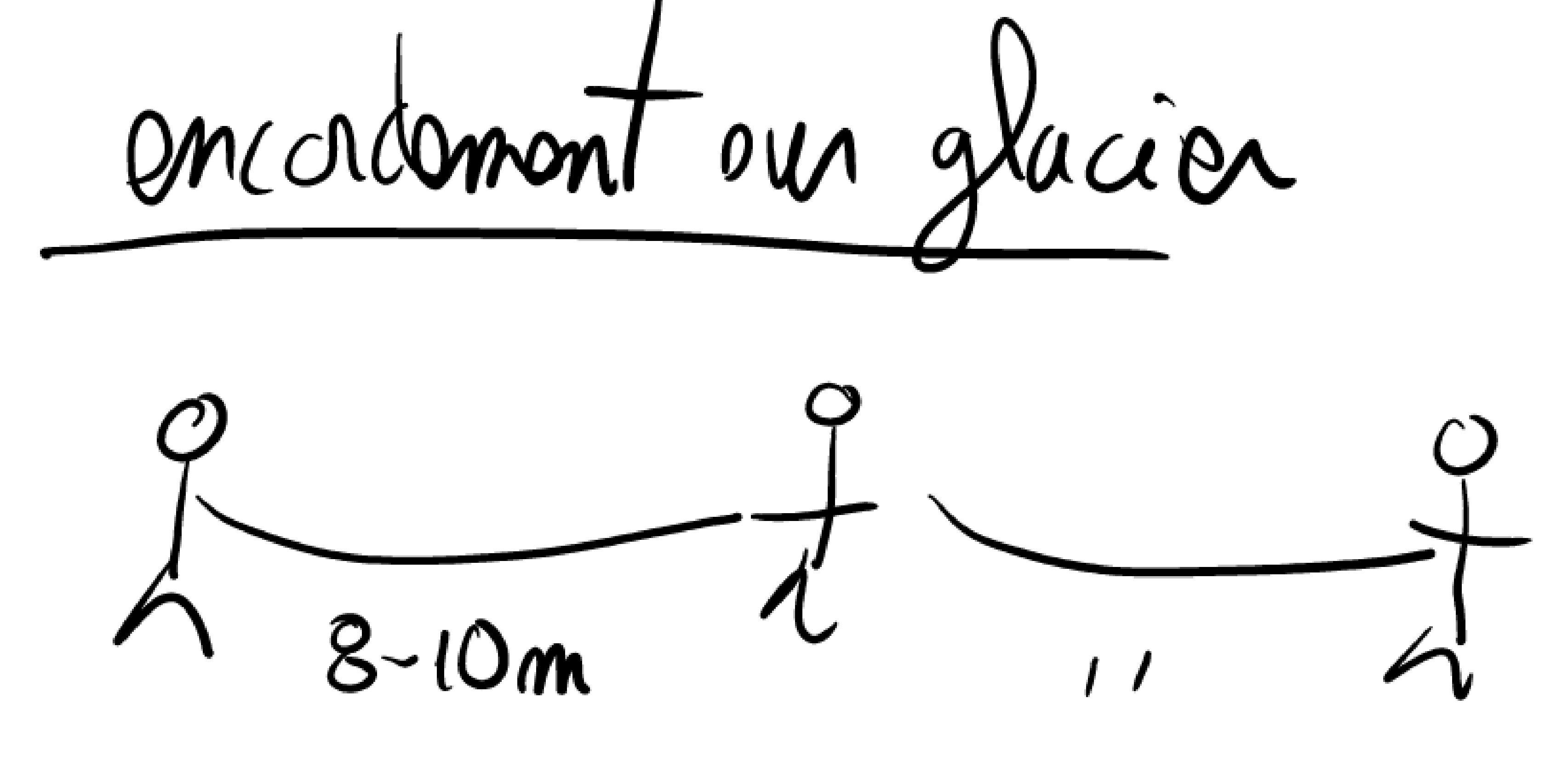Progression sur Glacier
Rope is not to avoid fall but to avoid a fall inside a crevasse. Rope is usually around 50m.
- Never leave alone
- Good clothes adapted for the weather
- Always wear the harness
- Gear adapted for alpinism
- Know how to rope yourself
- Know how to orient yourself in fog
- know the basic of rescue
- Must be roped
- Walk with "corde tendue" (see image)
- Limit the number of sharp turns
- Adapt speed to the person on the steepest part of the hill
- Roping needed on “naked “glacier if risk of fall
what is the rope length between people in alpinisme?::36/nb of people.

The more the merrier: more people is safer in case of a fall.
Terrain rocheux/mix
- Rocky terrain, easy = short rope (aka corde courte)
- Roche, arrete = corde tendue with slings, and cam and nut (Coinceur in French)
- Rocky terrain, hard = tire des longeurs



Rope techniques
- Short rope is very dangerous.
- Corde tendue = use the env for anchors
In alpinism we always use "corde a simple" (these can be doubled if it is long enough).


The challenge of a run is finding the optimal way to move forward based on the different technics.